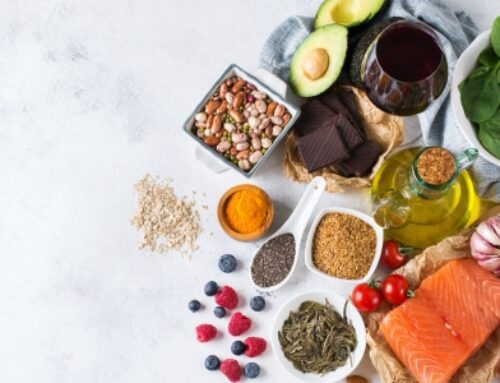
For most of us, a fair amount of time and energy is spent in the kitchen during the festive season whether it’s preparing party foods and share plates, or cooking up a big family feast on Christmas day. Utilise this extra time spent in the kitchen as an opportunity to get your kids more involved in creating meals and snacks – not only is this a great boredom buster but getting them involved in food preparation can have a positive impact on their readiness to try new foods. To set you up for success, have a quick read of 5 tips on getting kids in the kitchen before you get started on the following ideas.
Santa’s Little Helpers
A lot of calendars start to fill up with social events throughout December. Many work places tend to host family Christmas parties these days. Add to this the one hosted by the kids sporting team, or by your tight-knit community that holds street parties, or the extended family get-together in the days leading up to Christmas, plus the immediate family all on Christmas day. By the time New Year’s Eve rolls around (for which there may also be a party) it’s possible you’ve taken the kids to 5 or 6 different events. That can add up to a lot of party food, which can typically mean a lot of heavily processed foods that are high in fat, salt and/or sugar (party pies, anyone?).
Get your kids involved in preparing a healthy tasting plate to take to social events, that way you know there will be a nutritious option on offer. This will also teach your children that healthy foods are enjoyable party foods too! By getting them involved in the preparation they are also going to be more willing to reach for these foods while at the party. Some great options that are easy for the kids to help prepare include:
- Fruit skewers – simply add pieces of fruit on to a skewer. Melons, pineapple, grapes and strawberries work really well for these.
- Beef sliders – these are great mini sandwiches that will work particularly well for lunch or dinner parties, and so easy for the kids to help assemble.
- Avocado dip with mixed vegetable sticks – the colourful variety of vegetables makes this a really attractive and appetising party platter, and kids usually love the opportunity to dip
- Fruit and vegetable tasting plate – this a great way to bring both fruit and vegetables together. You could take the kids grocery shopping and challenge them to find 1 fruit and vegetable in each colour (e.g. red – capsicum and strawberry, green – snap peas and grapes, etc…) to build a rainbow.
‘Tis the Season
For me Christmas time is synonymous with stone fruits, cherries and mangoes. The festive season brings with it lots of new seasonal fruits that your child may not have seen for nearly 12 months. This is the opportunity to build some really positive associations (the fun and excitement of Christmas) with new unfamiliar foods. If your child is stuck in a fruit rut, get them involved in preparing some delicious fruit-based snacks using what is in season. The benefit of eating fruits that are in season is that they are at their most delicious and cheapest. Summer fruits include:
- Apricots
- Blackberries
- Blueberries
- Boysenberries
- Cherries
- Rockmelon
- Figs
- Grapes
- Lychee
- Mango
- Nectarine
- Passionfruit
- Peach
- Plum
- Pineapple
- Raspberries
- Watermelon
Smoothies – berries and mangoes work particularly well. Simply add 1 cup of milk, 1 tablespoon of yoghurt, some ice and the fruit of choice to the blender – hey presto! – delicious smoothie treat. With school holidays looming you may be looking for ways to keep the kids occupied. A great daily routine would be to have them in the kitchen making their own fruit-based snacks. Some great options that are suitable for most age groups include:
- Fruit skewers – as mentioned above, these are incredibly simple to put together and most kids really enjoy making them. The element of fun might be just what your child needs to motivate them to try something new.
- Kiwi and yoghurt layers and watermelon salsa – substitute the kiwi fruit in this recipe with one of the stone fruits (apricot, peach, nectarine or plums) or lychees and rambutan for an equally delicious snack.
A Christmas Miracle
If you have a child that is a fussy eater you may already be dreading Christmas lunch, especially if it’s being held at someone else’s house. Will there be anything that they will eat? Are they going to launch into an epic meltdown when turkey and salad is placed in front of them, and make it unpleasant for everyone?
Children need to be familiar with foods and often need to be exposed to a food multiple times before they will happily eat it. Therefore, foods that they may only be offered once a year are very likely going to be rejected. The added distraction that comes with having extra guests present for the meal and the excitement of the festive season makes it even less likely that a fussy eater will be willing to try something totally foreign to them.
The key to success when it comes to addressing fussy eating is repeated exposure. If you have an idea as to what is likely to be served up on Christmas day then start introducing this to your child now. I’m not saying that you have to spend hours roasting turkey every few days in the hopes that they’ll try it, but you could start buying small amounts from the deli for them to try. You could add this into sandwiches, or serve with crackers for afternoon tea over the coming weeks. Similar strategies can be used for other meats or seafood that are commonly eaten at this time of year. If you’re going to be heading to someone else’s house, offer to bring a side dish with you and start having this with family dinners between now and Christmas day. Allowing your child time to get used to these new flavours and foods in the relaxed environment of home without added distractions means that the chances of them actually sitting down and enjoying Christmas dinner with the extended family is much more likely – a true Christmas miracle!
Michelle Bulman is our Paediatric Dietitian expert and can help with getting your child more involved and trying a greater variety of foods.
If you’d like further help with your nutrition please click below:



